
Shooting the Olympus PEN F half frame camera from 1960
And postprocessing…
By Dirk Dom
Hi!
I’ve been in Spain, Costa Blanca, for three weeks, I had a bunch of very serious camera’s with me, but when leaving, as an afterthought I literally threw in, together with my bicycle gear, my little Olympus PEN F with 100mm lens and a red filter. This 1960 half frame camera I had bought about twenty years ago as an investment and I had never shot a single image through it. I brought ten rolls of Kodak Tmax 100. I also took my black and white developing kit.
Anyway, this is the camera:
Beautiful, isn’t it? It’s a smooth looking chrome little gem, all mechanical, no light meter.
It makes quite a lot of noise when pushing the shutter, and the noise sounds cheap.
Anyway, I put a roll of Tmax 100 in it (72 images), put the red filter on and started shooting. I eyeballed the light, using the sunny f/16 rule, which, after developing my first roll, I made into the sunny f/22 rule. This was the first time in my life I did that, being used to 1/10th stop displaying spotmeters, and all my shots came out good.
I had my Rodenstock medium format loupe with me and I also looked through the 45mm lens of my Xpan to see the results. What I saw really pleased me, and shooting the camera was both challenging and fun, so I just shot the camera with the 100mm and red filter the entire three weeks I was there. I totaled two and a half films, about 180 images.
At home, I scanned on my Epson V750 at 4,800PPI, which brought out the Tmax grain real nice.
I expected some sort of ultimate grain pictures, which I truly love. What I didn’t expect was the very mediocre sharpness. We are sooo spoilt by digital. The compositions were nice enough, but they had none of the WOW!!! Of my medium format.
A typical scanned image was like this:
Not that great, isn’t it? I ‘d say pretty hopeless.
I had also shot with a red filter for the first time in my life, (normally I use an orange filter). You know, I’m crazy about clouds, and the red filter brought them out nicely. But my landscape part often was extremely dull, with such small differences in grey tones that I had banding in Photoshop, even in 16 bit TIF files. So, another lesson learnt: use a red filter with great discretion.
I went searching for a way to make the shots presentable and even beautiful. I’m giving you my evolution, not the finished stuff:
It took a great deal of burning and dodging, often very subtle, to make the images nice. I accentuated the grain by sharpening until it looked nice and balanced.
At first, I made the grain much too pronounced and aggressive:
When I realized this, I got images where the grain looked more natural and which still had the spark in them:
And, what do you think about this? I put in some crazy contrast.
Now. I didn’t just shoot crazy cloudscapes. What I had had in mind originally, was using the camera for street shooting. Didn’t do a single shot of that. But the “normal” shots look absolutely nothing special.
I kept myself at maximum 1/125th second shutter time, the sunny f/22 rule put me, in sun, at 1/250 and f/5.6, with the 3 stop red filter. I didn’t go below 1/125, f/3.5 to avoid motion blur; so, evenings, I was a bit handicapped with was, in fact, exposure on 12 ASA. This is after sunset, have to do this one again, because it’s oversharpened, see the white contour around the landscape part?
The 1/125 made for nice images, sometimes, also after sunset:
Now, a poll.
Do you think these images worthy of printing or do you consider them a failure? Personally, I think it was a worthwhile experiment, but I think medium format is more beautiful. Maybe more different than more beautiful? Should I make a 12 x 18 inch album on Hahnemühle Baryta out of these shots, just to show how different it can be, photography?
Dirk

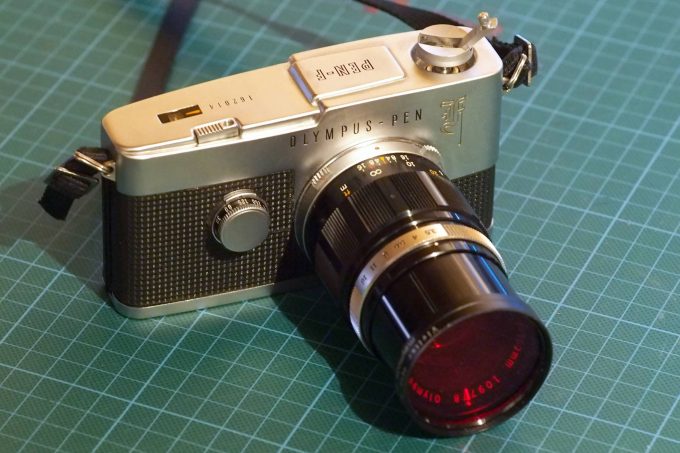
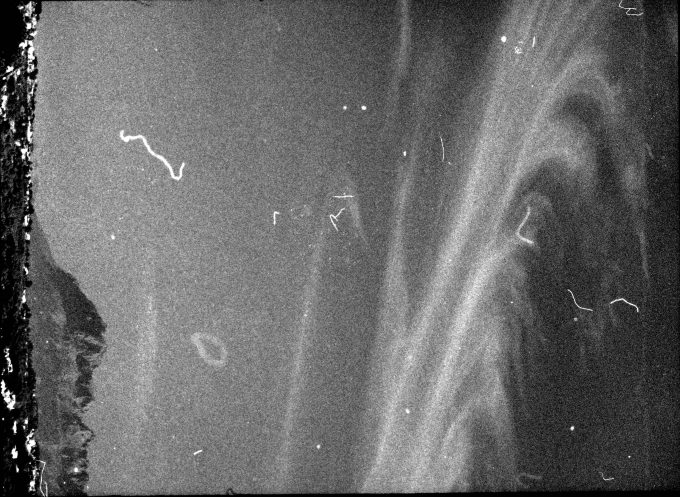
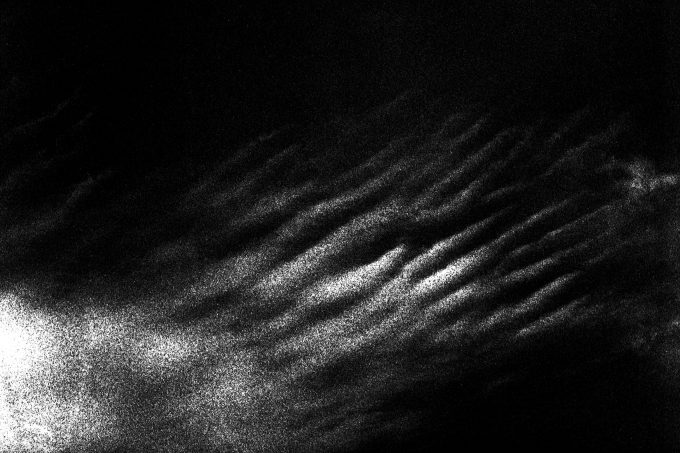
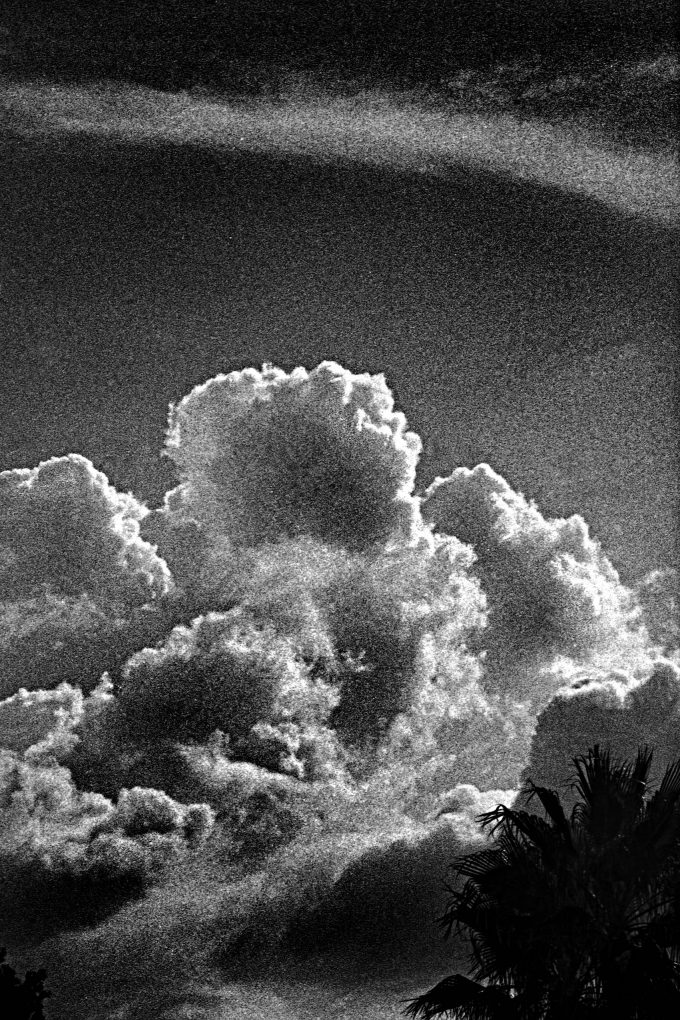
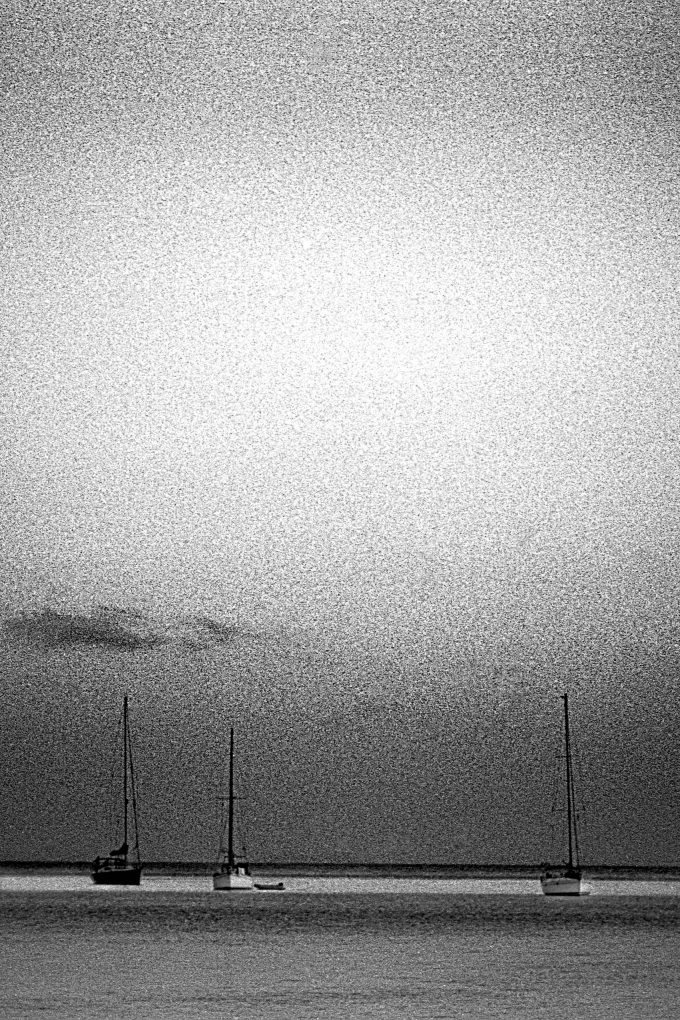
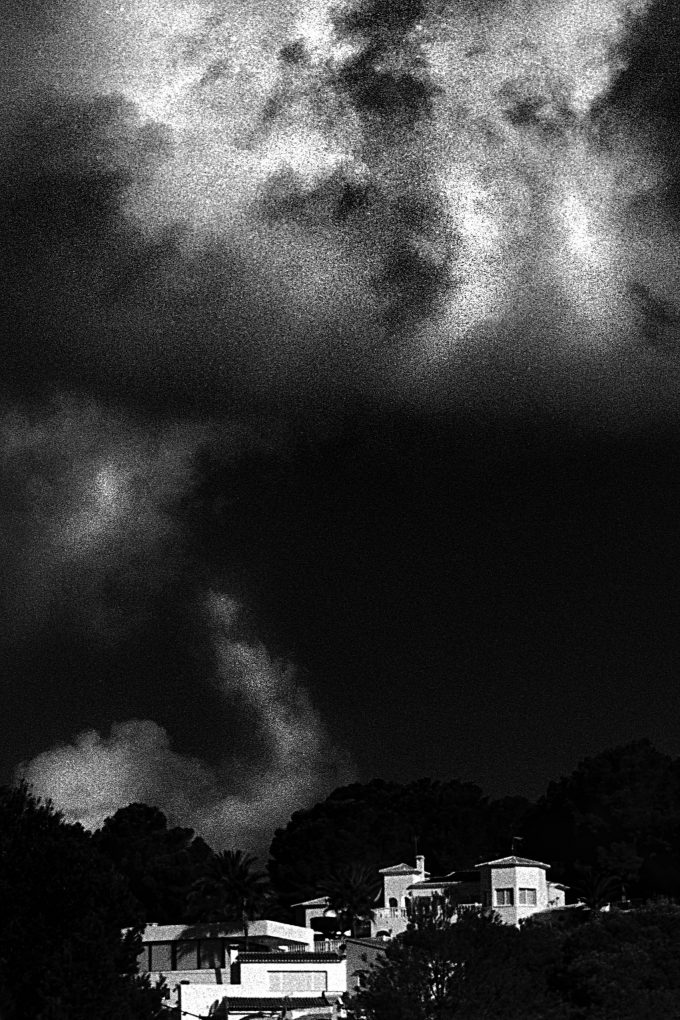
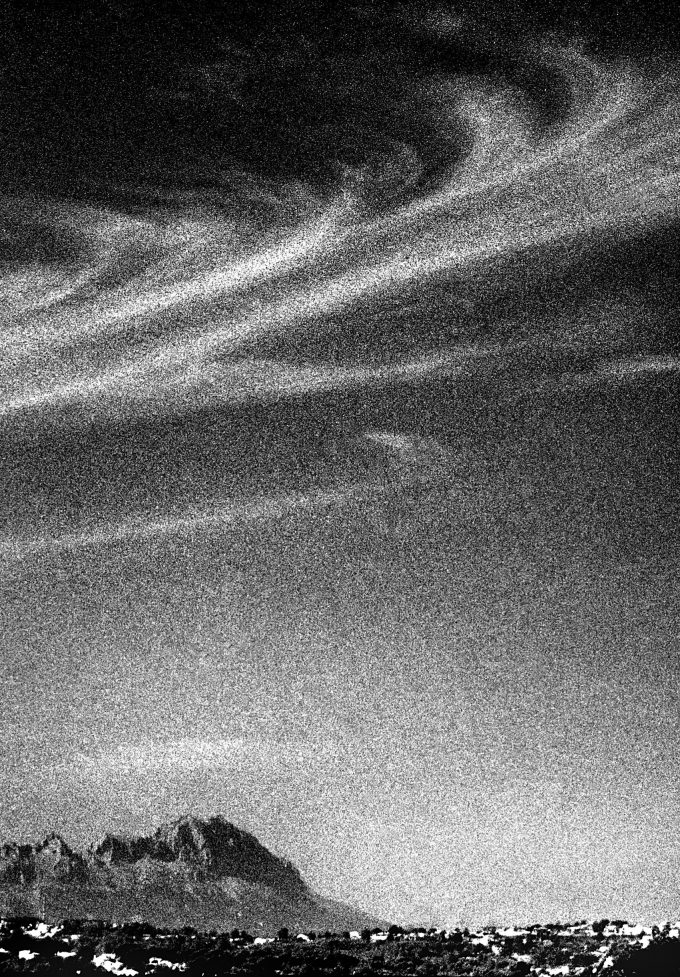
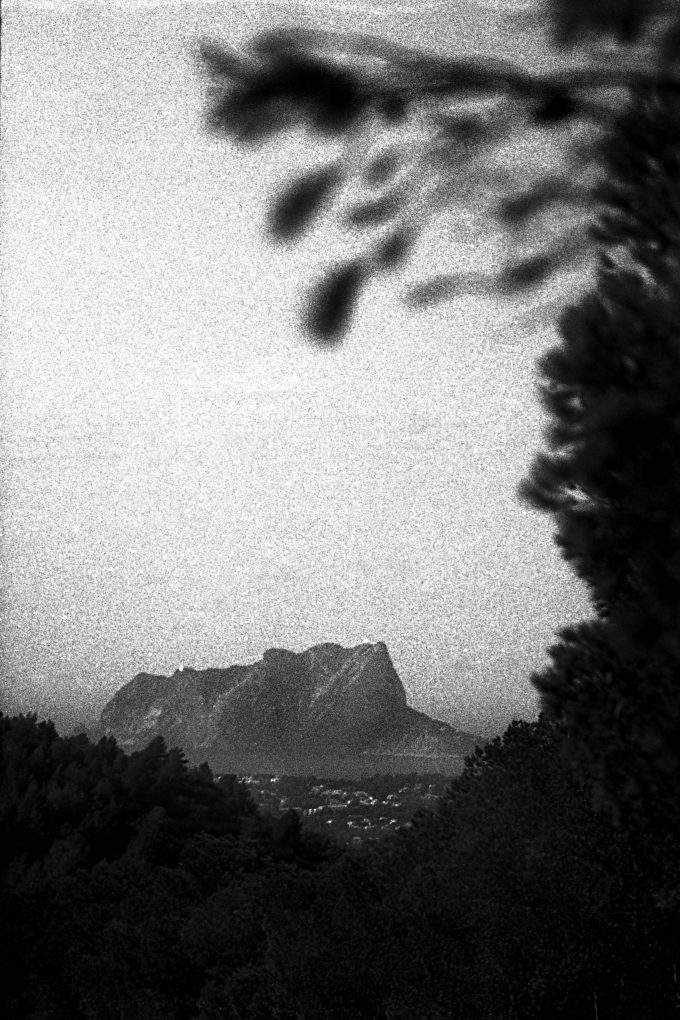
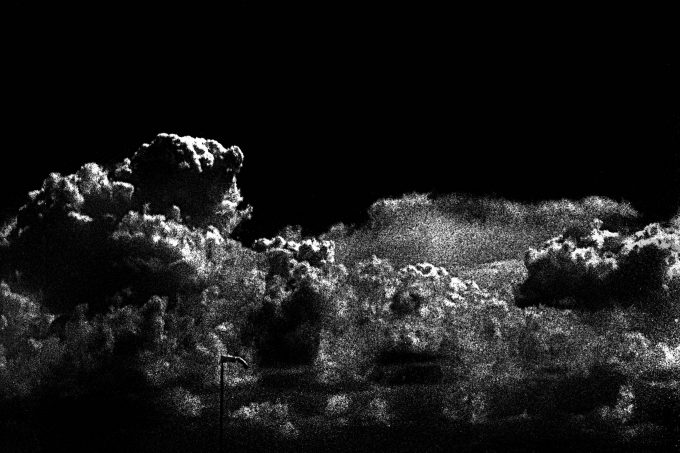
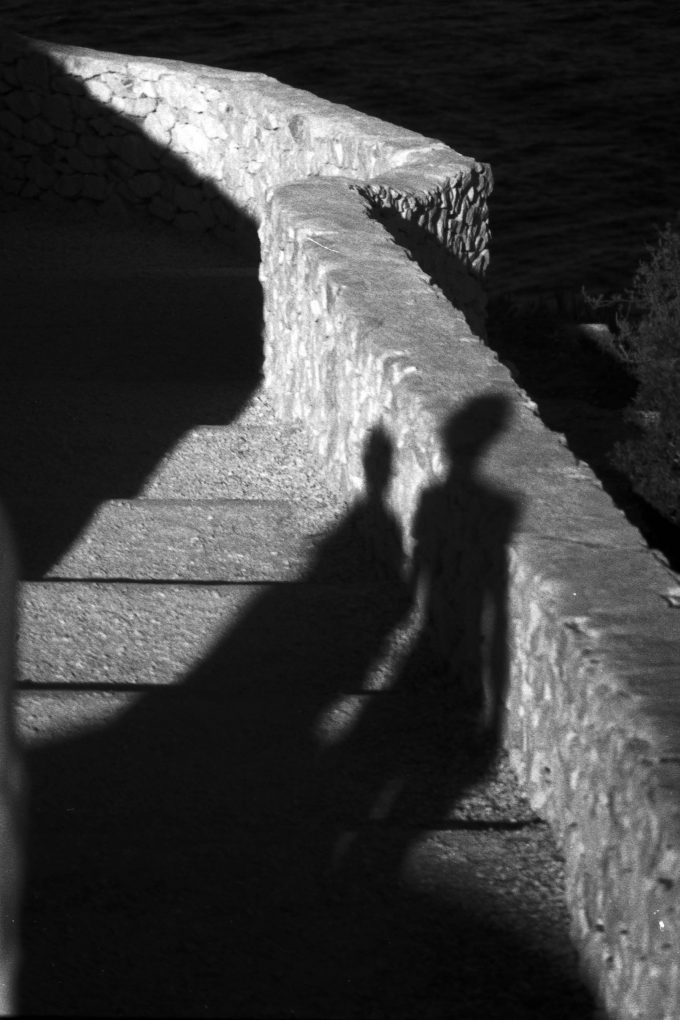
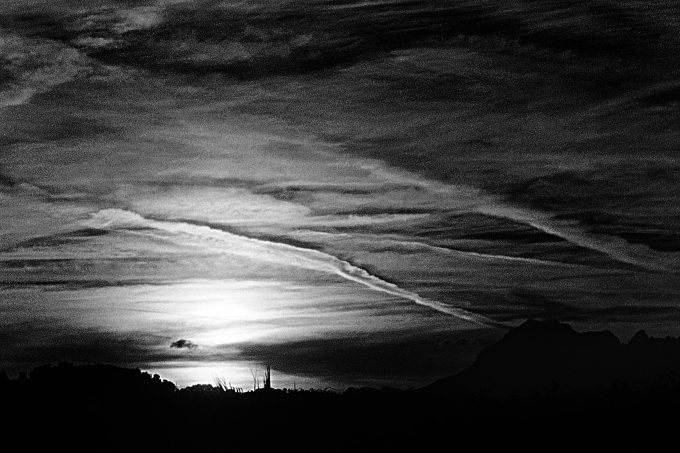
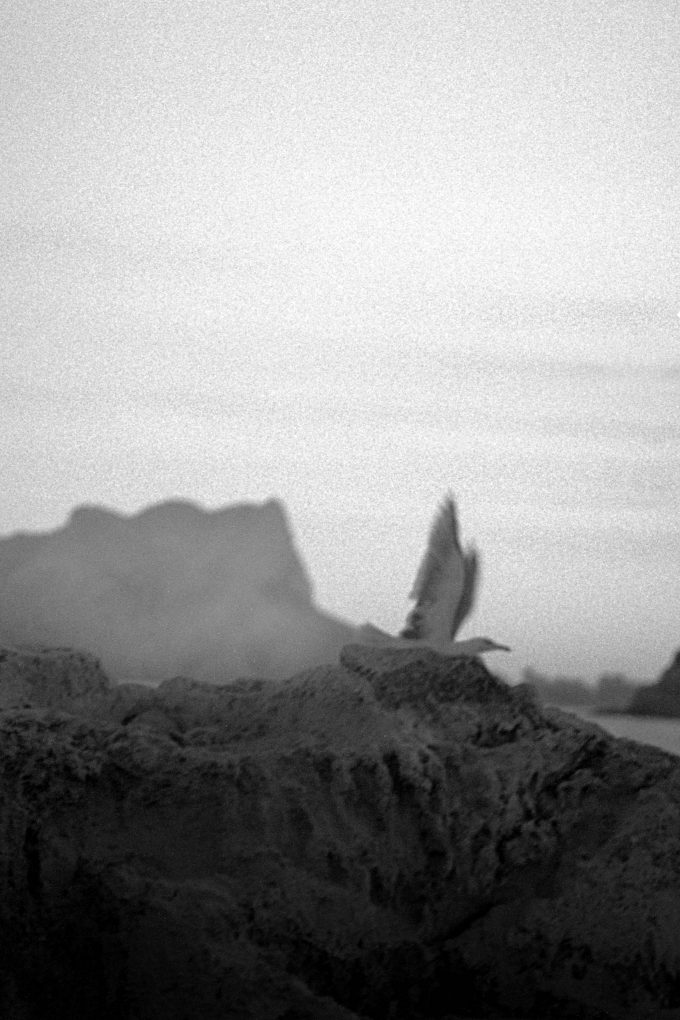
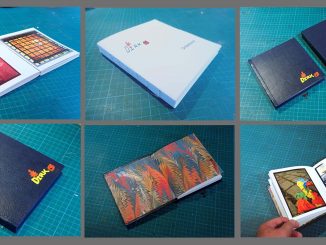

These negs deserve proper film scanning if you are going to evaluate them properly. You are starting with a decent negative, then introducing a lot of defects (excessive grain and lost sharpness and toning), then trying to recover it in post. The results are what you would expect from flatbed scans. Ick. If you are willing to put in the time with post-processing, and thinking about printing some, send the rolls out to be scanned.
Hmm, I question these results. I regularly shoot my Pen F and Pen FT with the kit 38 f1.8, typically with TMAX100 or Delta 100. I have the negs developed at a pro lab then scan at home on my V600 budget flatbed and the results are stellar. I have even photographed the same scene using my Pen and my iPhone 4s, because subjectively I judge the quality to be similar, and I was surprised to find that the Pen was quite a bit better than the iPhone in every situation. Not to mention it’s so much fun to shoot with! I think proper development is key!
As someone who shoot with a half frame camera quite often I can make a couple of observations.
First, scanning half frame negatives with a flat bed scanner is always going to give so/so results. It’s just simply not the right tool for the job. Flatbed scanners do great with medium format negatives and with some work can even be fine for 35mm, but half frame is pushing it.
Second, I would argue the red filter was overkill. A yellow filter would have probably given you the contrasty punch you want and you would have been able to shoot at a higher f/stop resulting in sharper images. Not to mention the fact that focusing with a red filter on the lens through such a tiny viewfinder is bound to give mixed results.
All that being said, I think the images are excellent anyway. 🙂
Print the wall and the sailboats, very nice!
otaner1.1x.com/gallery
I like the shot of the wall, and the clouds after sunset. Most of the others feel a bit “muddy” to me – it’s almost as if the subject of the images is the grain itself.
what a disaster
They look badly exposed and either the lens isn’t sharp or they are out of focus.
I’m spoiled by my iPhone.
I love the composition of these shots! I wonder, is the grain here analogue, or is it digital (either by scanning underexposed negs, or digital grain added in post)?
Hi!
I looked at the negs with a 15X lupe and the grain is there, sort of grey. I need a stronger lupe or a microscope to really see the details of the grain.
I did sharpen the grain digitally (clever sharpening in Photoshop) because the grain is such a big part of the composition. I did it to taste, taking as an example a few shots from the PEN series that showed strong grain in the sky.
These are scanned with a flatbed, maybe i need to get a drumscan or an Imacon scan done, but that’s just too expensive. With a drumscan at say 6,000 PPI I could really see the grain structure. i had a few Imacon scans done from other film, and they had way oversharpened the grain. It looked like aggressive black dots.
I did lots of wet darkroom dtirty years ago, but I’ve forgotten how the grain looked; my equipment wasn’t that great at the time, and I didn’t really take interest in grain. maybe I should pay someone with a very good enlarger lens, or rent darkroom space, to do a very good wet print so I have a reference.
Dirk.
IMHO the Epson 750 is not the best scanner for half-frame negatives. Some tests (http://filmscanner.info/en/EpsonPerfectionV750Pro.html) show that when one scans with the max (as per the specs) resolution of 6400 the actual resolution is 2300 dpi.
Super write up – would love this camera if I could be sure I could scan the film on my Nikon coolscan ?
Some love grain I love films like Ilford Xp2 which is almost grainless and digital ICE can remove dust spots during scan.
My finding is that negs should be scanned en masse asap after drying.
Love your sky scapes and cloud photos – but with less grain.
Thanks for post.
You should be able to scan at 35mm and get two images and seperate them later.
Interesting grain study. i shot extensively with a pen ft last year – fuji superia 400 and kodak portra 160. i’m really shocked at the grain you got from that Tmax 100. My color images were not much different grain-wise from what i got shooting the same films on a full framed camera.
As an aside the film pen F’s are such great little cameras. Lots of fun and economical use of film as well. BUT they are old, unreliable (especially the meters on the FT/v) and simple repairs are more expensive than just buying another body.
I get my film developed at a commercial lab and they are nice enough to seperate the two images on the one frame. This is nice because having two images side by side on one frame can be artistic but is generally annoying. Also they do not charge extra for ‘half frame’ whereas other labs basically double the cost of processing, negating much of the economical benefit of half frame.
I think some of these are very nice indeed. Cool camera, too. 😉
Unless this film was significantly underexposed, it should not be this grainy. It’s only half the surface area of standard 35mm, yet I’m seeing 8mm level graininess. I think it’s the scanner.
I agree. These may have been developed very poorly…the grain is absurd for T-Max 100.
If you want grain…get some Tri-X and some Rodinol…….
The secret of getting/testing a camera is to shoot it at its best, first. Then shoot under your personal needs/conditions. In this case another camera’s meter would have been a good idea.
That looks like the shots I get with my Pentax Q7 on the B&W mode, love the grain pattern, they’re dirt cheap these days and fit in your pocket.
got to love film ! 😀 print it 🙂
got to love film ! 😀
I think it’s beautiful. It now depends on how you print these and how big. As expected it wasn’t a result like large format but well it has an appeal. As long as the picture have a meaning for you then print it.
To be honest, I’m almost done buying my large format setup from a view camera to the developing tank. Last will be the scanner. In the end, large is the way to go. It is like the peak of all film photography.
I was tempted to buy a 110 spy camera but I told myself why waste time when in the end I’m definitely going large. I had to decide before I can’t bring heavy stuffs and go back compact.
You’ve got great work. Thank you.
The image of the three boats – grain and all – is really striking, as also is the wall with shadows – almost abstract. Those two I would certainly give baryta and even risk A3 and proper distance when viewing. Really good to share your exploration with no predetermined answers. I like older low-pixel digital for the same reason.
The Pen F was actually introduced in the early mid 60’s. You need to dry your developed film in a dust and lint free room such as a bathroom. We used to use dry cleaning fluid such as carbon tetra chloride for cleaning negatives, but don’t smoke at the same time if you want to live! Ideally a film such as Ilford FP4 and a fine grain or acutance developer will give amazing results from half frame (the equivalent of micro 4/3!).
Just a technical point: Micro 4/3 is a quarter of 8-perf 35mm. APS-C is actually half-frame. The crop factors (2x and 1.5x respectively) make the sensors seem bigger than they actually are.
Well, then, you were shooting HALF-FRAME! Your processing technique has to be more careful, to get full tonal quality out of the film. Mention of the developing technique and temperature is important to the experiment, too. More agitation means more contrast and grain, therefore, without mention of these factors, the experiment is not complete or satisfactory. I say do it again, with these controls noted.
One more thing, T-Max is not really meant for scanning in my experience. Its fine grain is illustrated with optical enlarging. Scanning brings out every nuance an defect in the film. Optical enlarging does not. Sharpness is a perception for the eye. Yes, digital has despoiled the process and our thinking.
Print it Dom! It’s good that it is different from the results used with other gear. These have a crunchy granola like density that is good for you!
Unlike the hyper sharp, nutrition-less digital images of unsatisfying nothingness that are posted everywhere while waiting for the even sharper next gen device to appear a week later so the cycle of emptiness can be repeated!
😉
Peace out
Huss
Sharpnes is not the enemy. You can always soften an image. It is the content that makes me
annoyed with the “Copy Content”.
Well drone , a brave piece. I liked the cloudscapes. If you really like grain you could always try an 8x11mm original Minox (only joking ) See you have the same problem I have with scans dealing with the dust, does any one have a solution beyond diligent washing and spotting in Light Room. But really great to see a classic of the era getting used. Thank you
There is no magic formula. After a proper washing and drying just using cotton gloves for handling. A soft cloth and an air brush are usually enough… Sticky dust can be removed carefuly rubbing the negative with the glove. Use a magnifier to see the negative properly. It’s tedious but…
Also avoid scratching obviously the negatives but also the flat scanner glass.
For old films you can have a look in here
http://support.en.kodak.com/app/answers/detail/a_id/33120/~/remove-mold%2Ffungus-from-negatives-or-slides/selected/true
Lovely camera.
You have a mix of grains in there while coming all from Tmax 100.
Failure?, nothing so far from that.
Of course you can’t expect getting prints as detailed as from a medium format film. So what
I love the look and feel of the half frame. I use to print for a photographer in the early 90’s, Bill Arnold. We printed up to 16×20 and the grain was beautiful. He shot with a few different Pens.
https://billarnoldphotographs.com/early/
I have always enjoyed with in camera diptychs that can me shot with the half frame. A beautiful tool that can produce beautiful results.
Keep up the good work,
James
I wouldn’t consider those photos a failure. As for the prints – if you can afford it, you should make prints. Always. 🙂
On the other hand – medium format, yes its better, x-pan is better, 35mm format is better.
Dirk, the Pen F is a wonderful camera – I’ve reviewed it and written a couple of articles for Steve on it – I think the links are below.
anyway, I find that your photographs have far too much grain and are quite harsh and generally not to my tastes artistically – I shot with Rollei Retro 400s and the results were lovely.
I’ve also printed (traditionally) using a Rodenstock enlarging lens (I forget which one) on Durst and printed on (Ilford) Fiber along with (Adox) RC paper (variable contrast) and the results have been beautiful on a 10×8″ (approx) paper – nice enough for mounting and displaying (which i’ve done so)
I think the red filter hasn’t done any favour here but TMax 100 should be much finer than my retro 400s (variant of an Agfa 400 iso film in Rodinal) so I cannot understand why there’s so much harsh grain.
Your scanner is also superior to mine (I have a 10 yr old Epson 4990 Flatbed and scan using Epson Scan generically at not a high res)
and the other thing about the Pen F is the ability to use the half frame as a triptych –
So in my (humble and inexpert ) opinion according to my own tastes i’d say No – that the experiment in this case hasn’t worked and they’re not worth printing – UNLESS the photos you shot are what you like, and want you wanted and YOU feel are worthy of printing – as ultimately Art is Art and generally such things are in the eye of the beholder – so your choice my friend.
It is great to pull out an old camera and have fun with it. I have a few old clunkers I’ve used with just one roll of film (to see if they work) and mostly been pleasantly surprised by the result. In this case, it’s hard to say if I’d been pleased because your processing has hidden any qualities the camera produces! The compositions are nicely artistic though.
I actually use a Pen F 40/1.4 on my EM1 sometimes. It’s capable of very good resolution and a nice look, if I stay away from f1.4. Pen F lenses seem a good match for digital sensors. That was a brave thing to take a single lens that long but you used it very well.
You ask if we consider these images worthy of printing? That is such a subjective thing but, since you ask, no, I don’t. Except maybe the shadow image. The grain is just awful to my eyes, sorry. The images are lost somewhere in between a faithful reproduction and an artistic interpretation, without being either. Just how I see it.